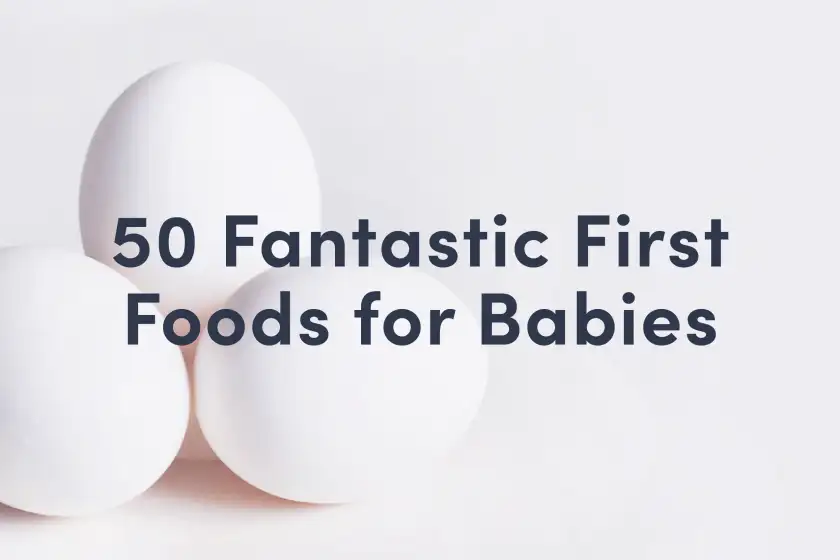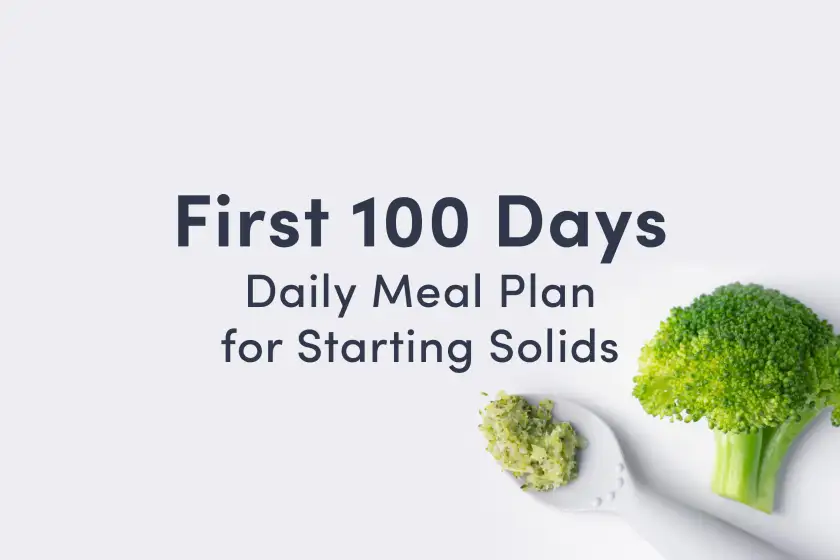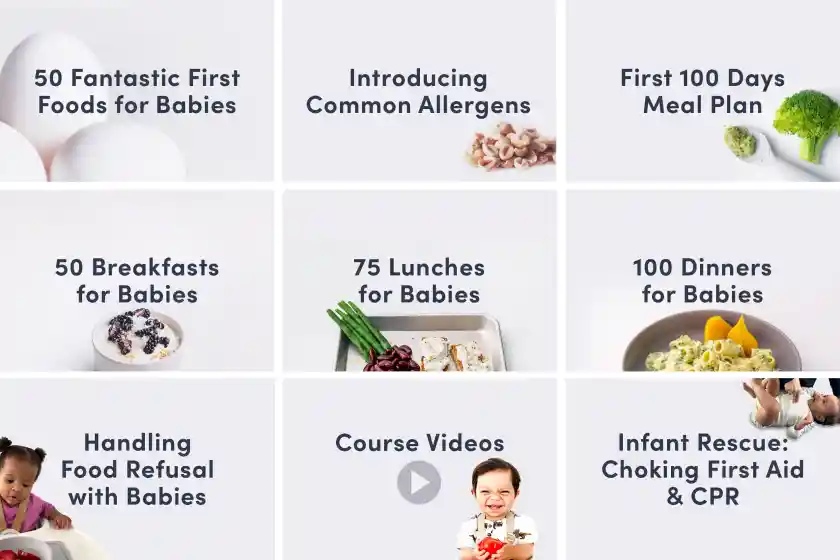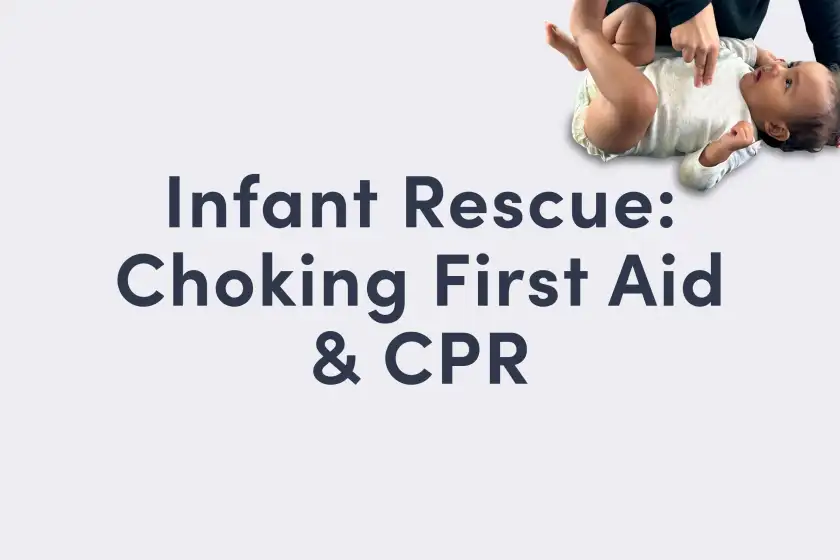Safety: Creating a Safe Eating Environment for Baby
There are a number of things you can do to create a safe and positive space for eating. It's important that you create a peaceful eating environment free from sudden noises or distractions and educate yourself on common choking hazards. If you've never taken a first-aid training course, now is a good time. Learn how about the differences between gagging vs. choking and get our guide on how to perform infant rescue. And never, ever leave your baby unattended while eating and stay within an arm's reach at all times.
Need help starting solids? Solid Starts Compass℠ is our guided app experience to help you navigate first bites and beyond.
Placement & Highchairs
The safest place for your baby to eat—whether you are spoon-feeding or doing finger foods—is a highchair that has a totally upright seat and adjustable foot plate that enable your baby's knees to be at a 90 degree angle. Ideally your baby's highchair also has a removable tray so it can be brought right up to the dinner table where you can model eating and baby can be part of the family meal. For more on how to choose a safe high chair (or how to modify an existing chair), see our Ultimate Guide to High Chairs for Babies.
Do not feed your child in the car or stroller. Do not allow your child to walk around and eat. And never feed your baby in a baby bouncer, car seat, or other reclined infant seat. Lastly, always watch your child when they are eating. For a comprehensive summary of guidelines to prevent choking injuries or death, see the NY State Dept of Health website: Choking Prevention for Children.
Gagging & Choking
First, it is important to distinguish the difference between gagging and choking. True choking is when the airway is obstructed, and the baby is having trouble breathing. Signs of a baby choking can include:
inability to cry
difficulty breathing
skin tugging into the chest
look of terror
high-pitched sounds
skin color changes (ranging from blue to purple to ashen-like)
If you suspect your baby is choking, immediately administer infant choking first aid with alternating back blows and chest thrusts and call 9-1-1/local emergency services on speakerphone so your hands are free. If another person is present, one person should immediately perform choking first aid while the other calls for help. Conduct age-appropriate CPR if you believe your baby's airway is open but not breathing.
Gagging, however, is a protective reflex that results in the contraction of the back of the throat. It is a natural function and protects us from choking. When this happens, it’s important to let your baby work the food forward on their own and to refrain from sticking your finger in your baby’s mouth, which can push the object further down your baby’s throat, making the situation worse. For a detailed overview of gagging, continue over to our Gagging page.
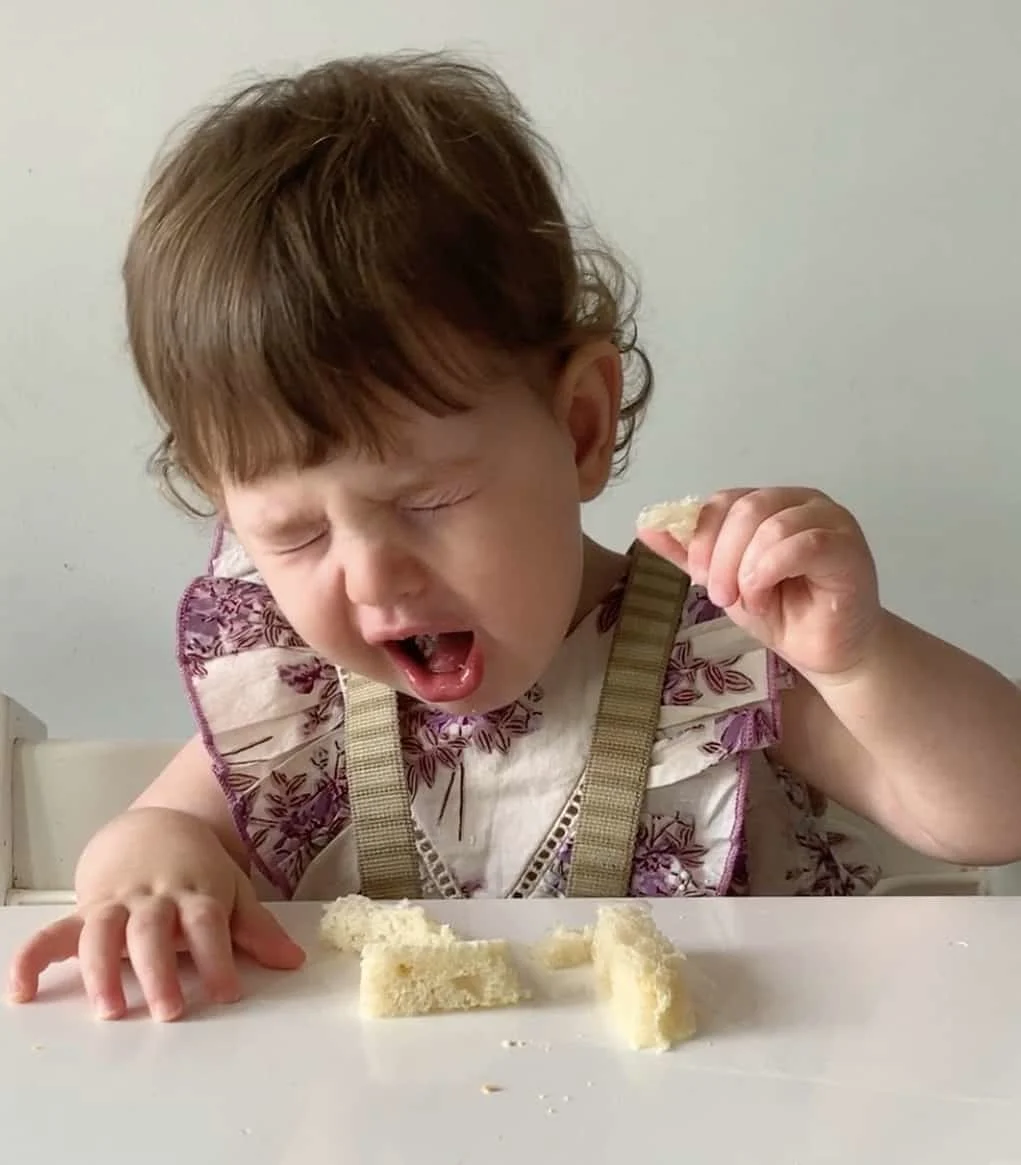
All babies gag in their eating journey—it's one of the ways they learn how to eat. The good news is that your baby should outgrow gagging after a couple of months of practice with a variety of textured foods.
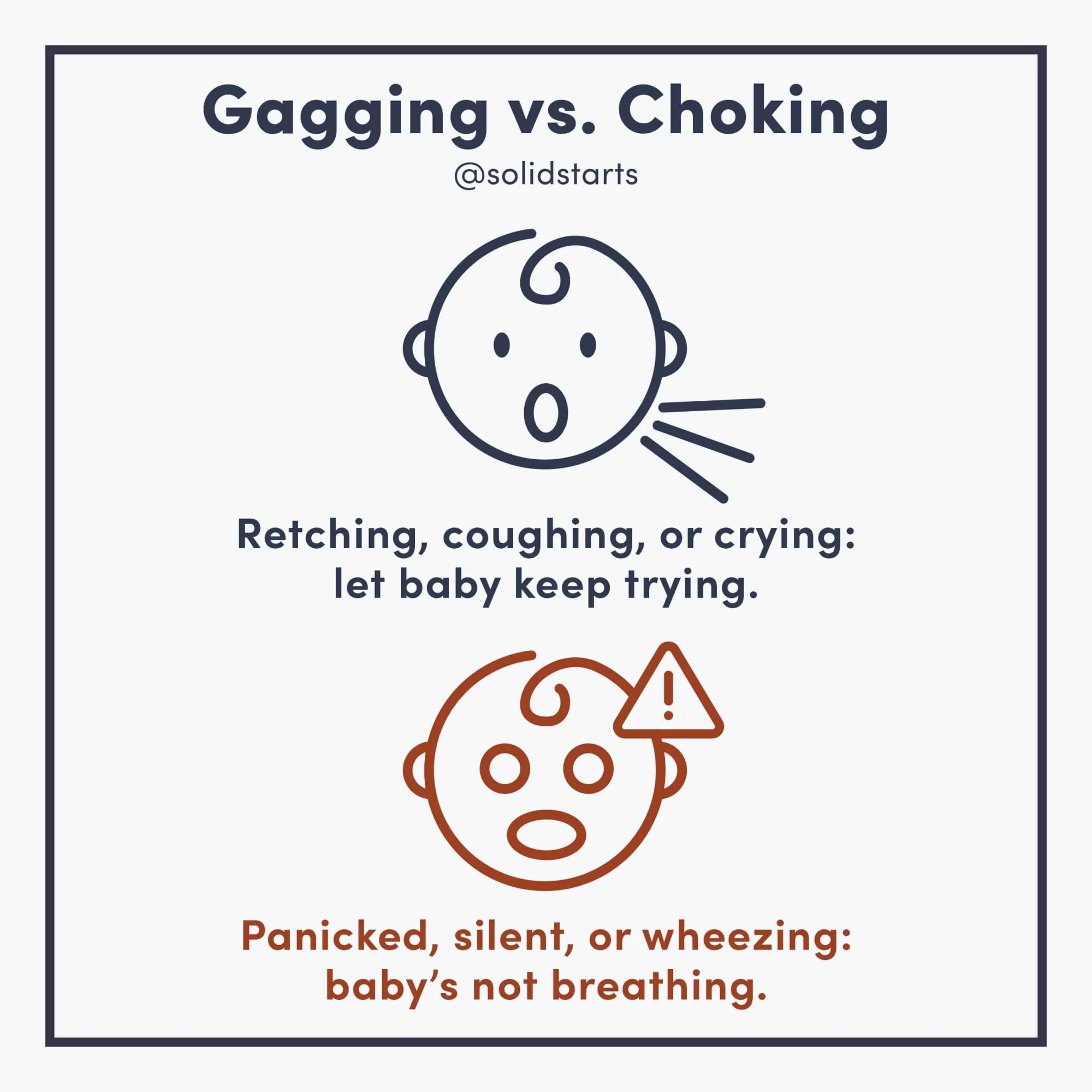
For more information on how to minimize the risk of choking when introducing solids, make sure you familiarize yourself with the list of common choking hazards in this section and recommended food sizes and shapes for the age of your baby, which you can look up in our free First Foods® database. And be sure to learn proper infant rescue techniques. For videos of how to do infant rescue with real children, see our course video on Gagging, Choking & Infant Rescue.
Infant CPR & First Aid Resources
One of the most important things you can do to protect your baby is to take a CPR class online, download our Infant Rescue Guide, or at your local health facility and review safety procedures. Some resources:
Safe Food Preparation for Babies
Babies have immature immune systems and organs. This is why, for example, you must cook meat well done, refrain from offering raw fish, and ensure your baby is not getting too much sodium, which can be lethal in certain amounts. When preparing food for your baby, make sure you:
Wash your hands thoroughly before, during, and after cooking
Wash cutting boards, knives, counters, and hands after handling raw meat or fish
Wash fruits and veggies well—before you cut them. Including avocados and melons
Defrost food in your refrigerator (not on the counter or at room temperature)
Cook food thoroughly. Meat and fish should be well done, eggs firm and not runny
Cut round foods (grapes, blueberries, cherry tomatoes, etc.) into vertical quarters
Avoid adding salt to your baby’s food
When buying canned foods, opt for no sodium added or low-sodium brands
Avoid offering your baby juice or any food or beverages with added sugar
Never add honey to your baby’s food. Honey can cause infant botulism, a serious disease that can cause muscle weakness and paralysis, when given to children less than 12 months of age
Avoid offering unpasteurized milk and milk products as these can cause serious bacterial infections.
Watch our video here for more information on foods to avoid for safety reasons
Oversight
The single most important thing you can do to keep your baby safe while eating is to be within an arm's reach. That one solo trip to the bathroom might just be the moment your baby figures out how to maneuver out of her safety harness. (True story.)
Expert Tips Delivered to Your Inbox
Sign up for weekly tips, recipes and more!
The content offered on SolidStarts.com is for informational purposes only. Solidstarts is not engaged in rendering professional advice, whether medical or otherwise, to individual users or their children or families. No content on this site, regardless of date, should ever be used as a substitute for direct medical advice from your doctor or your medical or health professional, nutritionist, or expert in pediatric feeding and eating. By accessing the content on SolidStarts.com, you acknowledge and agree that you are accepting the responsibility for your child’s health and well-being. In return for providing you with an array of content “baby-led weaning” information, you waive any claims that you or your child may have as a result of utilizing the content on SolidStarts.com.

